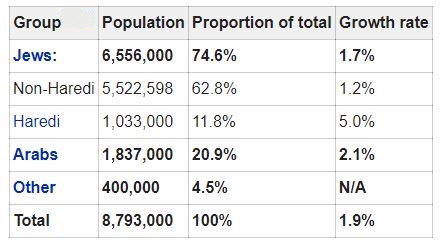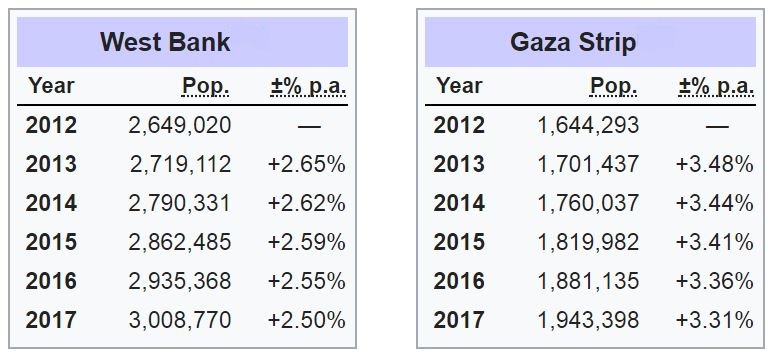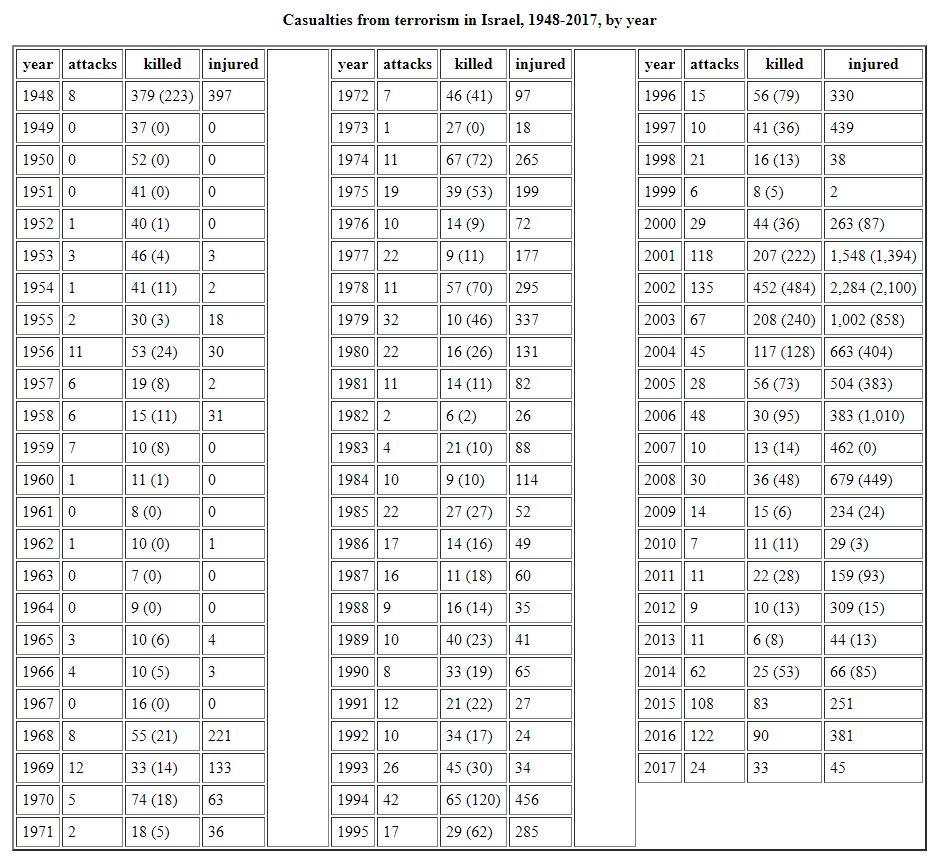By Kent R. Kroeger (Source: NuQum.com, January 11, 2018)
{Send comments to: kkroeger@nuqum.com or kentkroeger3@gmail.com}
Since 1967’s Six Day War, the status quo in Israel and the Palestinian Territories has been enforced through Israel’s military superiority supported by the auspices of the United States.
Today, that status quo sits at a crossroads. Does it continue as is? Or does it address the unacceptable and unsustainable conditions currently existing in the West Bank and Gaza Strip.
Suppressing future Palestinian prosperity, the World Bank reports a 29 percent unemployment rate in the Palestinian territories, including a 44 percent unemployment rate in Gaza, which is twice the rate in the West Bank. It should be especially concerning to the Israelis that the unemployment rate in Gaza for those aged between 15 and 29 is over 60 percent.
Social order is difficult to maintain at those levels.
According to the United Nations Development Programme’s Human Development Index (HDI), Palestinians in the West Bank and Gaza rank 114th out of 188 countries.
The HDI is a summary of human development that assess within every country its capacities and protections for collective action, sustainable development, media autonomy, human rights, and personal security.
By comparison, Israel ranks 19th and the U.S 10th, while Israel’s neighbors, Lebanon, Jordan and Egypt, rank 76th, 86th, and 111th, respectively. Norway, Australia, Switzerland, Germany and Denmark represent the Top 5, in that order, respectively.
But to fully comprehend Palestinians’ lives in the West Bank and Gaza, other statistics are more informative. For example, a 2017 study by Abdel Aziz (Al Quds University) and Panos Vostanis (University of Leicester, England) found that post traumatic stress disorder (PTSD) symptoms were reported by 60 percent of parents in Gaza, while 70 percent of their children indicated PTSD symptoms.
According to a study published in January 2017, 54 percent of Palestinian boys and 47 percent of Palestinian girls aged 6-12 years old are estimated to have emotional and behavioral disorders — the highest levels among any country or region in the Eastern Mediterranean Region (EMR). Other studies have shown that more than forty percent of Palestinians suffer clinical depression, making it among the highest rates in the world.
“In Palestine, chronic exposure to trauma and violence over a 50-year period has led to a crisis in mental health,” according to journalist Charlie Hoyle who has covered this issue closely over his long career in the region.
He contends a primary driver of these mental health disorders in Palestine is the arrest of children by Israeli military forces which, studies show, leads to high rates of anxiety, depression, educational difficulties, and suicide.
And, yet, the Trump administration’s policies on Israel and Palestine, led by Trump’s son-in-law Jared Kushner, require us to believe the problem is centered with the dismal leadership of the Palestinians.
If only the Palestinians would get their act together, is a common Trump administration refrain.
Fair enough. There is some truth in that statement, but it’s central premise is cruelly misguided, historically biased, and simply unhelpful.
While Palestinian leadership under the Palestinian Authority (PA) leader, Mahmoud Abbas, has been weak and unproductive for the Palestinian people, it is not the source of the Palestinians’ problems. Nor is Hamas, Gaza’s elected authority, responsible.
The ineffective leadership of the PA and Hamas is a symptom. The root of the problems in the West Bank and Gaza is the occupation itself which perpetuates the systematic disenfranchisement of the Palestinian people from control over their own lives.
Without a fundamental reinvention of their social and economic system to something where the Palestinian people are given more autonomy, there is no political process currently in place to relieve the Palestinians of their current situation.
They must, instead, for practical and survival reasons, look to the most dominant and successful country in their region for help, Israel, who has shown no ability or inclination to provide that level of help.
Yet, at this juncture, what other option exists? A Two-State-Solution where the Palestinian state’s primary source of revenue will be international aid? Such a solution will force the new Palestinian state to start out its existence as a ‘failed state.’ Hardly a solution.
Under realism’s dispassionate gaze, the only workable outcome that benefits both the Palestinians and Israelis will be a One-State-Solution where Israel officially annexes the West Bank (and possibly the Gaza Strip).
Here is why that outcome will be profoundly difficult to implement…
The Significant Barriers to a One-State Solution
There are many impediments to a One-State-Solution, the biggest being Israel’s need to preserve the State’s unique Jewish character. No solution to the Israeli-Palestinian conflict can involve the institutional redefinition of the Jewish State.
(1) Unacceptable demographics
The demographic upheaval a One-State-Solution would impose on Israel is ostensibly a deal breaker. Currently, Jews account for 74.6 percent of Israel’s 8.8 million people, compared to 20.9 percent for Israeli Arabs (mostly Palestinians).

Though a controversy exists over the exact population size in the Palestinian Territories (the Palestinian estimate is higher than the Israeli estimate), the differences do not substantively change the problem.

If a One-State-Solution, with full citizenship extended to the nearly 5 million Palestinians in the Territories, were implemented today, it would change Israel’s very essence. Whether Israeli Arabs would become an ethnic majority depends on the actual populations in the Palestinian Territories. Even if the lower Israeli estimates are accepted as fact, it would only be a matter of time, perhaps less than a decade or two, for Israeli Arabs to become the ethnic majority.
An alternative One-State-Solution option, sometimes advanced so as to prevent Israeli Arabs from becoming a majority, sees Israel annexing the West Bank, but not the Gaza Strip, which would either remain under Israeli control or become an administrative territory controlled by the Egyptians.
To varying degrees, both One-State-Solution options still raise the specter of apartheid. Would the five million new Israeli citizens have full enfranchisement and equal citizenship rights under the Israel’s unwritten constitution — while still maintaining the Jewish character of the State?
Jimmy Carter’s 2006 book “Palestine: Peace Not Apartheid” set off a sharknado of criticism when he suggested the Israelis were engaging in a “worse form of apartheid” than what he witnessed in South Africa decades earlier.
“When Israel does occupy this territory deep within the West Bank, and connects the 200-or-so settlements with each other, with a road, and then prohibits the Palestinians from using that road, or in many cases even crossing the road, this perpetrates even worse instances of apartness, or apartheid, than we witnessed even in South Africa,” said Carter during an interview on Israel Radio in 2006.
“The greatest commitment in my life has been trying to bring peace to Israel,” Carter told the Atlanta Press Club at an earlier stop on his 2006 book tour. “Israel will never have peace until they agree to withdraw [from the territories].”
While Carter’s critics generally accept his sincerity, most dismiss his criticisms of Israel as either rooted in a personal bias favoring the Palestinians or just being naive. Carter adamantly (and rightfully) rejects the bias criticism, but what he can’t ignore anymore is the growing irrelevancy of the Two-State-Solution he has championed since his presidency.
(2) Status quo works for the Israelis
A second significant barrier to considering a One-State-Solution is the inherent advantage of the status quo to Israel’s immediate security interests. The dividing walls constructed over the past 20 years that separate Palestinians in the West Bank from Israeli settlers has achieved its strategic goal. Violence in Israel coming from the Palestinian Territories has plummeted and remains low since construction of the walls began in earnest in June 2002.

Terrorism-related deaths in Israel surged during the 2nd Intifada from 44 persons in 2000 to a peak of 452 persons in 2002. With the building of the separation walls annual deaths since 2005 have exceeded 40 persons in only two years (2015 and 2016).
What is the incentive for Israel to disrupt the status quo at this point? With the walls and its immense security apparatus — Israel spends 16 percent of its GDP on defense and security spending, more than any other advanced industrial economy — Israel has never been more secure.
As Israel continues to build new homes for Israeli settlers on the West Bank — hundreds more were approved just last week — the Two-State-Solution is dying a death of a thousand cuts.
Yet, at this point in time, it is hard to see what will lead Israeli leaders to the conclude that ‘two nations under one state’ is the best path to long-term peace and security within the region. But that day will come. The Trump and Netanyahu administrations are accelerating the forces that ensure that outcome.
(3) Israel already has an inequality problem (as most advanced economies do) — a One-State-Solution will make it worse
Finally, the difficulty of integrating five million West Bank and Gaza Strip Palestinians into Israeli society would be a titanic challenge within a country already struggling with issues of inequality.
And this inequality problem is not helped by a Knesset bill now being considered that would officially designate Israel as “the nation state of the Jewish people,” thereby institutionalizing the second-class status of Israel’s Arab population and demoting the Arab language from “an official language of Israel” to a language with “special status.”
While the impetus for this bill is driven by Israel’s far-right parties, tentative support is also coming from other segments.
“I would rather be a second-class citizen under a Jewish state than a first-class citizen in an Arab state,” said Amir Shalayan, a Christian Arab Knesset member who has supported versions of the “nation state of the Jewish people” bill in the past.
Ishmael Khaldi, an Israeli Arab and the nation’s first high-ranking Muslim in the Israeli foreign service, wrote in a 2009 essay for the San Francisco Chronicle:
“I am a proud Israeli – along with many other non-Jewish Israelis such as Druze, Bahai, Bedouin, Christians and Muslims, who live in one of the most culturally diversified societies and the only true democracy in the Middle East. Like America, Israeli society is far from perfect, but let us deal honestly. By any yardstick you choose – educational opportunity, economic development, women and gay’s rights, freedom of speech and assembly, legislative representation – Israel’s minorities fare far better than any other country in the Middle East.”
While this sentiment may not be representative of most Israeli Arabs, there is a large number of Israeli Arabs, particularly among the young, that recognize their lives in Israel are superior to their brethren in the West Bank and Gaza or other parts of the Arab world.
In a 2016 survey, 55 percent of Israeli Arabs said they are proud of their Israeli citizenship, though 76 percent also said they reject the definition of Israel as a “Jewish state.”
Contrary to what many of Israel’s critics believe, the civil rights of its non-Jewish citizens are protected by its laws and the Israeli Supreme Court has consistently interpreted “Basic Law: Human Dignity and Liberty”[ and “Basic Law: Freedom of Occupation (1994)” as guaranteeing equal rights for all Israeli citizens.
However, Israel remains socially bifurcated and inequality is systemic.
A few statistics reinforce this point:
- Although Palestinians make up about 20 percent of Israel’s population, less than 7 percent of the budget is allocated to Palestinian citizens, according to Yousef Munayyer, an Israeli citizen and the executive director of The Jerusalem Fund.
- According to a 2005 study at Hebrew University, three times more money is invested in the education of Jewish children than for Arab children in Israel.
- The New York Times reported in 2008 that 53 percent of the impoverished families in Israel were Arabs.
- According to American-Israeli Cooperative Enterprise, Arab villages have historically received less funding than Jewish areas and this has affected the quality of Arab schools, infrastructure and social services; Arabs are also underrepresented in higher education and most industries (except construction).
But even in the presence of this inequality, it is equally true that Israel’s Arab citizens are largely integrated into Israeli society as seen in these facts:
- Israel is a democracy and Israeli Arabs do possess full voting rights, accounting for 14 percent of the Knesset, Israel’s parliament. [In a perfect world, Israeli Arabs would make up 20 percent of the Knesset. However, as someone from a country that allows U.S. congressional districts to be drawn like those in North Carolina, I do not judge Israel’s democracy in a harsher light than that of my home country.]
- Israeli Arabs are granted all fundamental civil liberties, including freedoms of religion, speech, and assembly, and in fact enjoy more civil rights than Arabs living in any other Middle Eastern country.
- Israel is also the only country in the Middle East where Arab homosexuals can live without fear of prosecution, which is why many Palestinian gays have fled for Israel.
- As of May 2017, 42% of all nursing students in Israel were Arabs, 38% of pharmacists in Israel were Arab, and 38% of medical students at the Technion in Haifa were Arab.
- Arabic, like Hebrew, is an official language in Israel (though that status could change if the Knesset passes the “nation state of the Jewish people” bill).
A common language is particularly important and indicative of a society’s level of social integration and national unity. In the case of Israel, Hebrew is the unifying language as 90 percent of Israeli Arabs speak Hebrew (though only 3 percent of Israeli Jews speak Arabic).
In much the same way English fluency correlates with economic success among Hispanics in the United States, for the One-State-Solution to have any chance of success, it will require Palestinians in the West Bank and Gaza, particularly the young, to learn Hebrew.
That is not a trivial task. The vast majority of Palestinians in the West Bank and Gaza have little background in Hebrew. English is much more likely to be a second language for these Palestinians, as it is compulsory in most West Bank and Gaza schools.
Should West Bank and Gaza Palestinians be brought into the Israeli state as full citizens, this language gap will pose a serious barrier to their educational opportunities and economic prospects. It will be hard for older Palestinians in the Territories to learn Hebrew, if they haven’t already — but, for Palestine’s large youth population, under a One-State-Solution it will be prerequisite for economic advancement.
So what will bring the Israelis and Palestinians to embrace a One-State-Solution?
The barriers to a One-State-Solution are formidable. But, for the Palestinians in the West Bank and Gaza, the status quo has become so unsustainable that it is not hard to imagine a growing interest among average Palestinians in sharing the same economic bounty as their brothers and sisters already living in Israel. It will, most likely, require a new generation of Palestinian leaders to make this profound psychological leap.
For the Israelis, it is harder to see what forces bring their leadership to explore (much less accept) a One-State-Solution. The Israelis have proven they can maintain their internal security while occupying the West Bank and containing Gaza. It is also implausible that another intifida or a coordinated military action with Lebanon’s Hezbollah will change Israel’s security posture to such a degree that they will be forced to the bargaining table.
Instead, for Jewish Israelis, the motive for considering the One-State-Solution is more likely to come from a moral imperative to end the occupation and an economic imperative to leverage the significant human capital potential in the Palestinian Territories.
Israel remains diplomatically isolated, though we saw with the U.S. deciding to move its embassy to Jerusalem a growing number of countries eschewing a reflexive condemnation of Israel in the United Nations vote on the U.S. decision.
Still, among many in the world’s diplomatic class, Israel is a pariah and this does restrain its economic growth. The Boycott, Divestment and Sanctions Movement (BDS) also remains a force actively trying to make Israel feel an economic cost from its occupation of the West Bank and isolation of Gaza. However, evidence that the BDS movement has harmed Israel’s economy is sparse.
Someday the Israeli business community will make a persuasive economic argument that the State of Israel could benefit by annexing the Palestinian Territories and extending equal rights to all residents in these areas.
In combination with Israel’s growing confidence in its military ability to deter and repel any hostile attack from its regional enemies, Israel’s political leadership may soon take a longer, more serious look at the One-State-Solution and not simply dismiss it out-of-hand, as they do now. Of course, the Palestinians in the West Bank and Gaza will need to make a similar cost-benefit calculus if they are to also consider the One-State-Solution.
To those who say such a solution is impossible in today’s political environment — and it is hard to say they are wrong — I say, keep your minds open. Big changes may be coming to the Israeli-Palestinian conflict and it must, and will, benefit both the Palestinians and the Israeli people.
K. R. K.
{Send comments to: kkroeger@nuqum.com or kentkroeger3@gmail.com}
About the author: Kent Kroeger is a writer and statistical consultant with over 30 -years experience measuring and analyzing public opinion for public and private sector clients. He also spent ten years working for the U.S. Department of Defense’s Office of the Under Secretary of Defense for Personnel and Readiness and the Defense Intelligence Agency. He holds a B.S. degree in Journalism/Political Science from The University of Iowa, and an M.A. in Quantitative Methods from Columbia University (New York, NY). He lives in Ewing, New Jersey with his wife and son.
